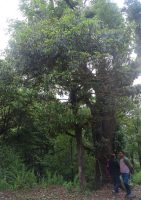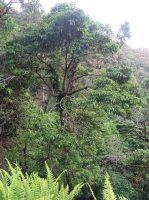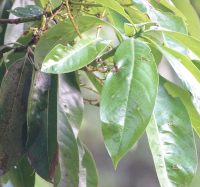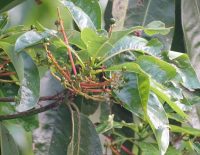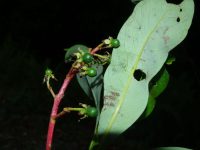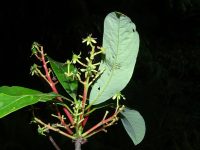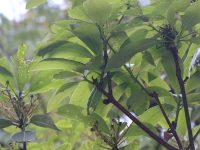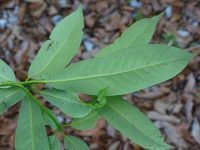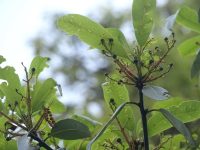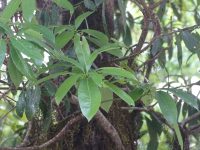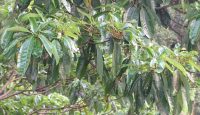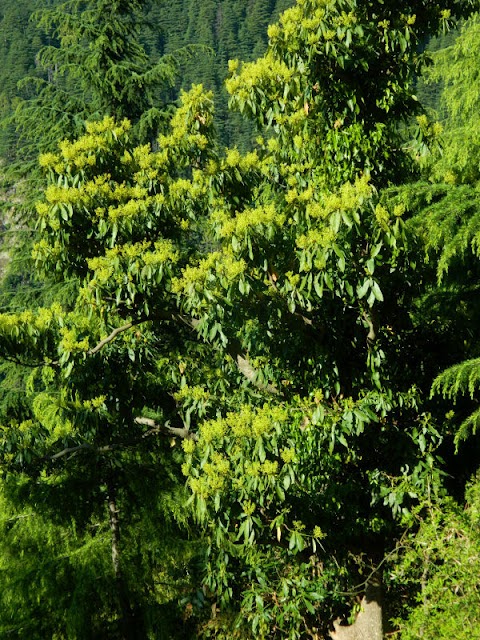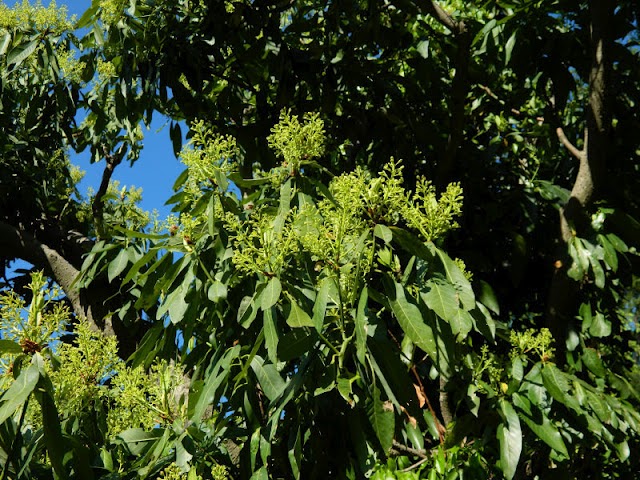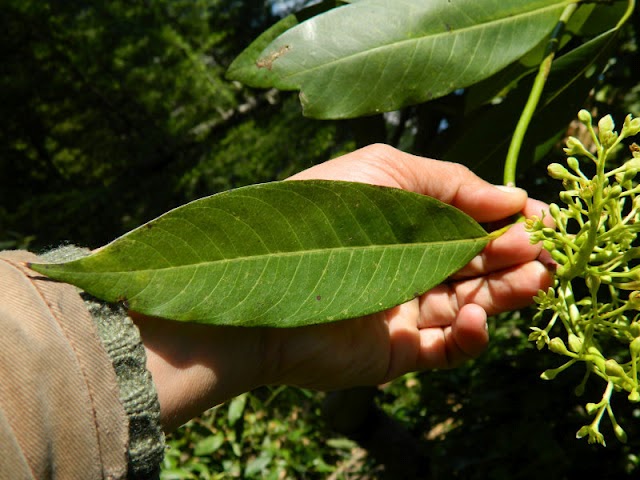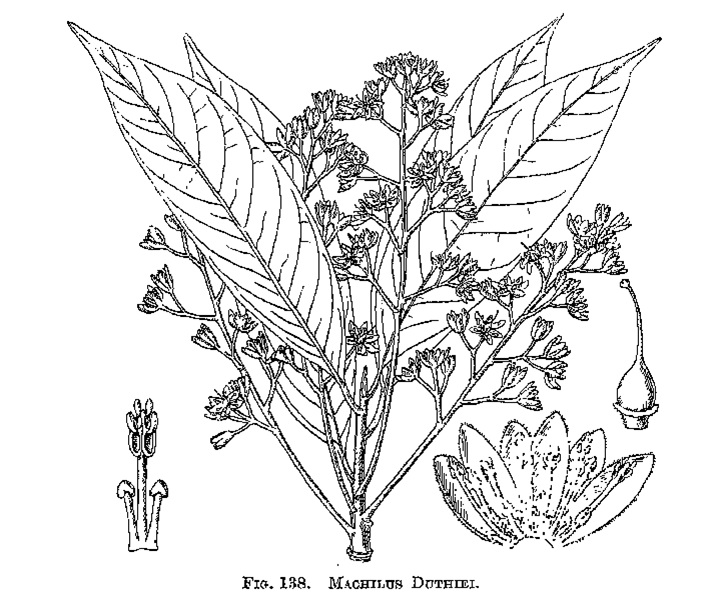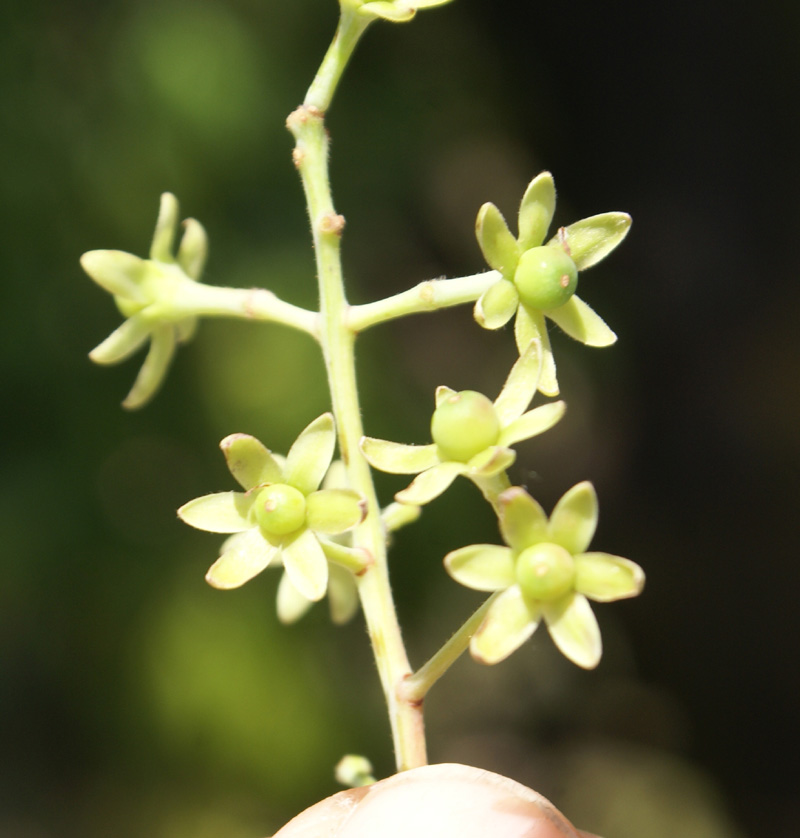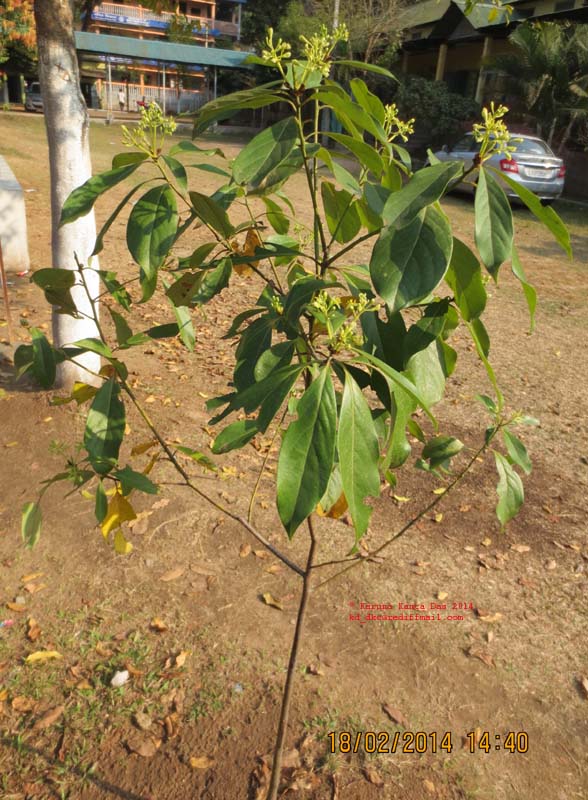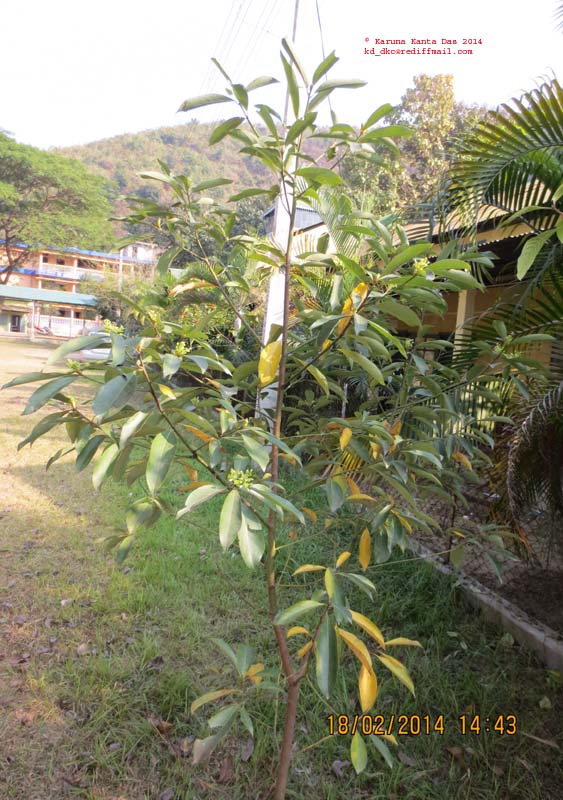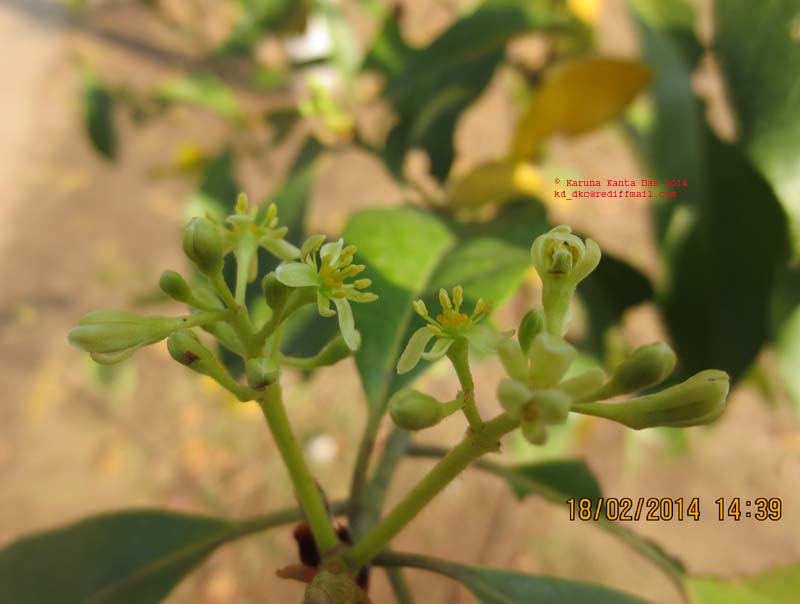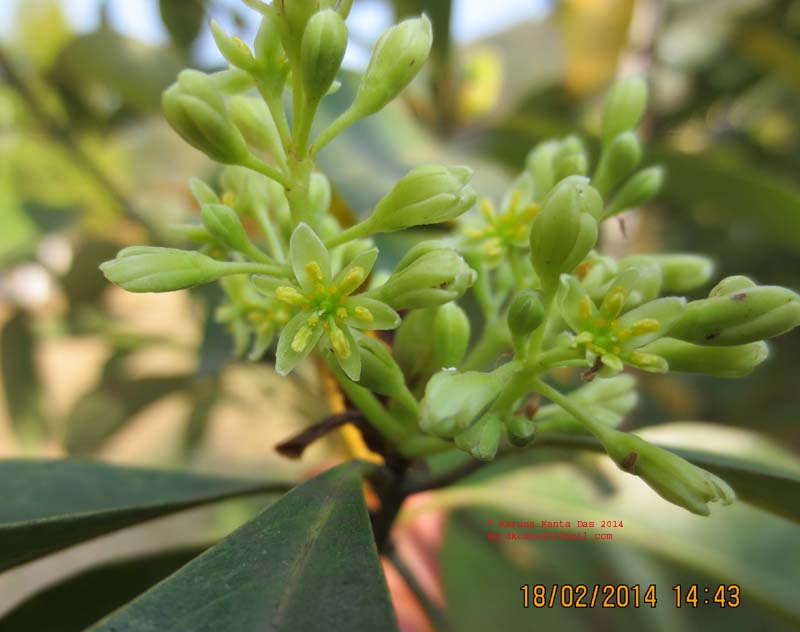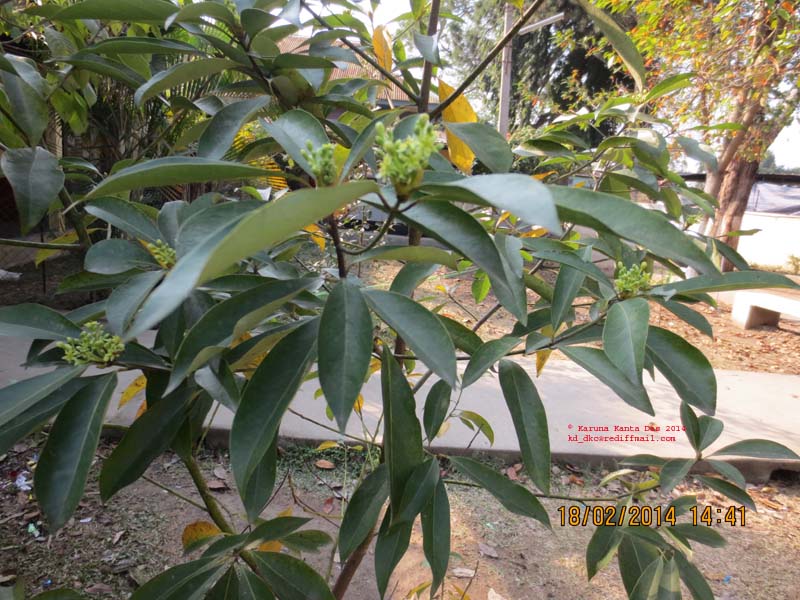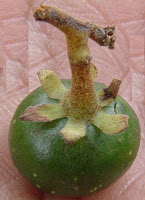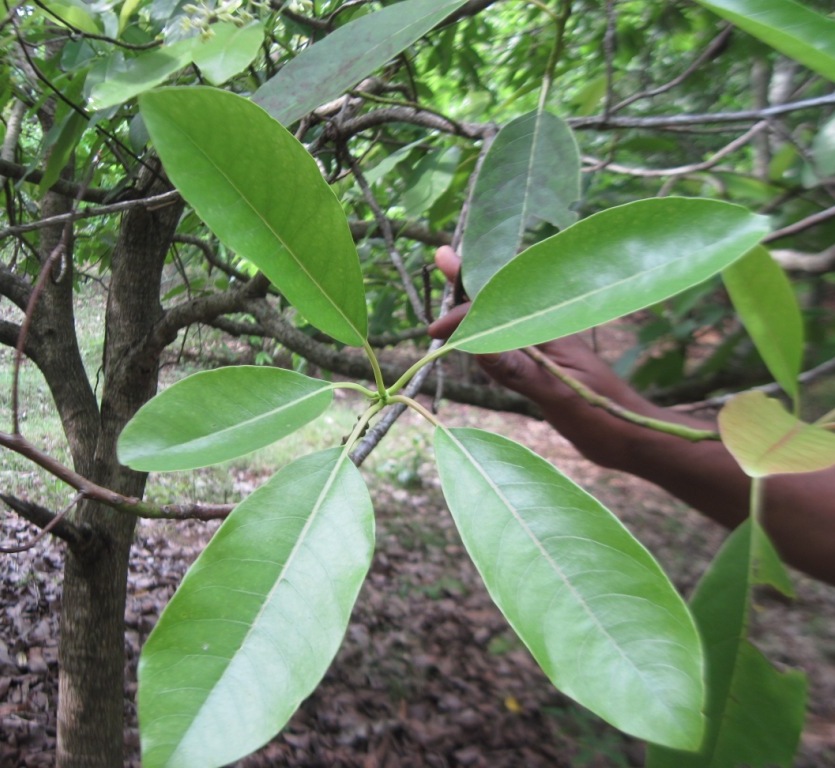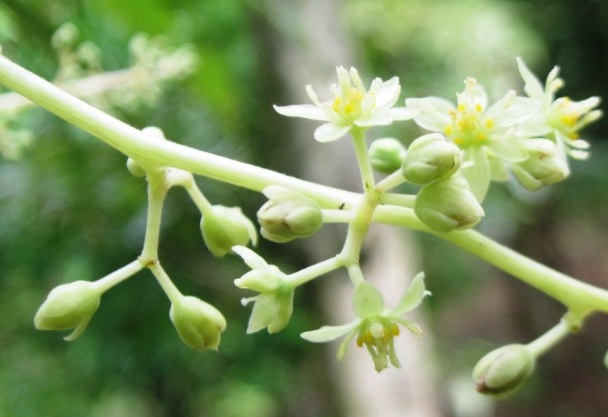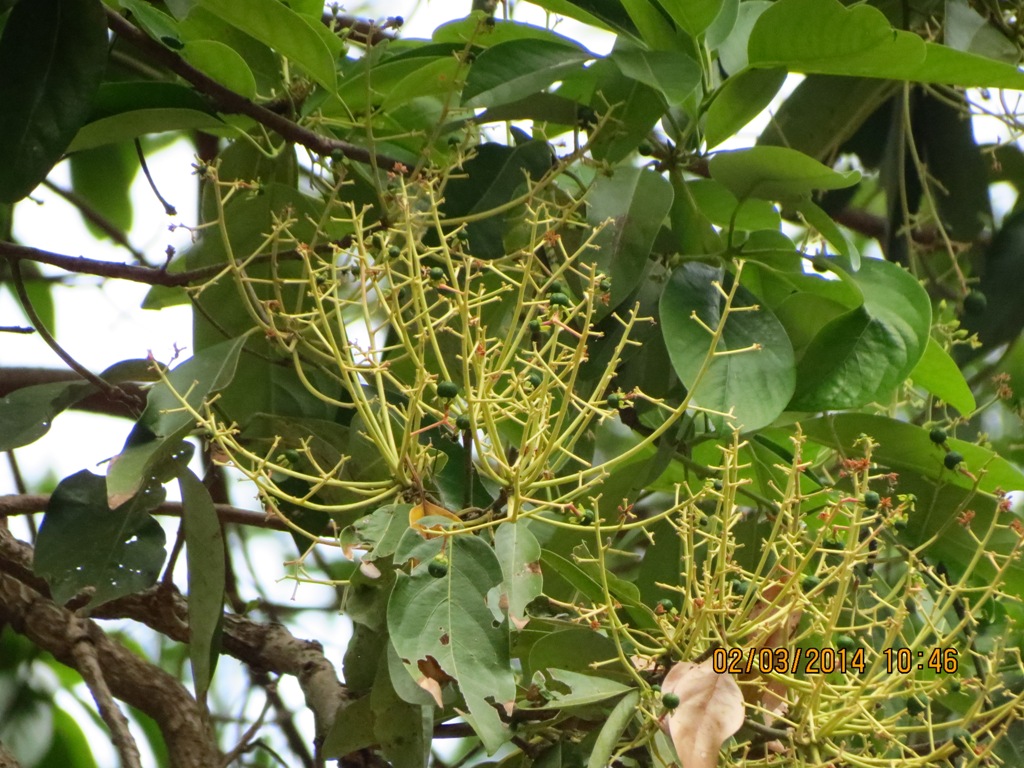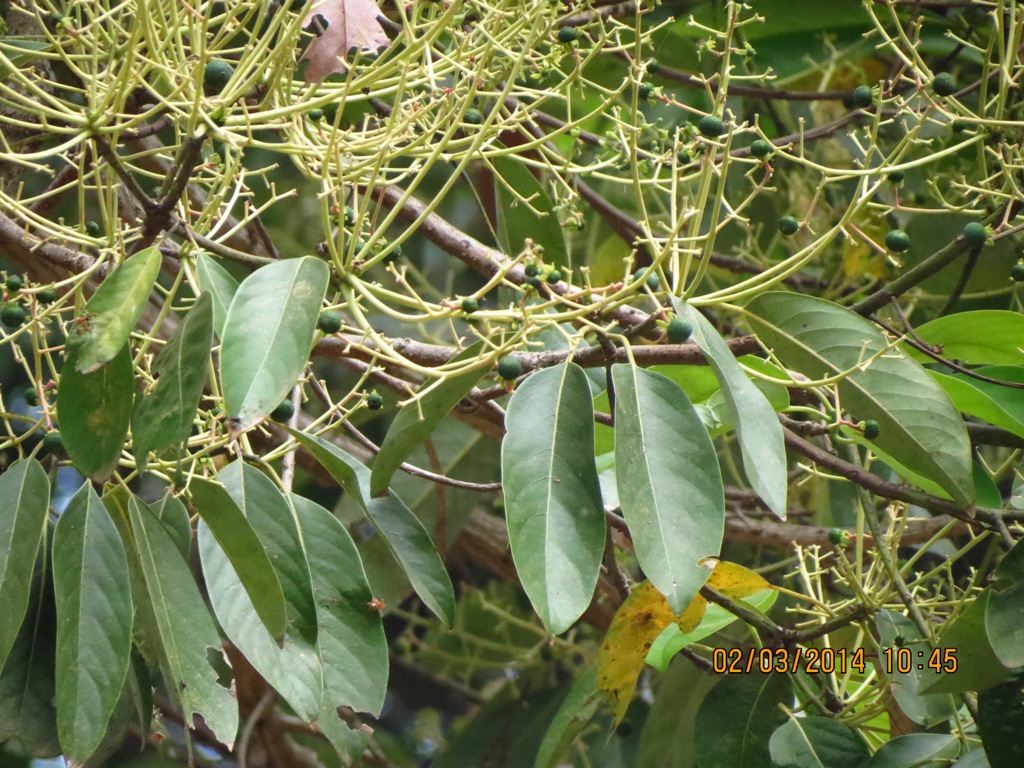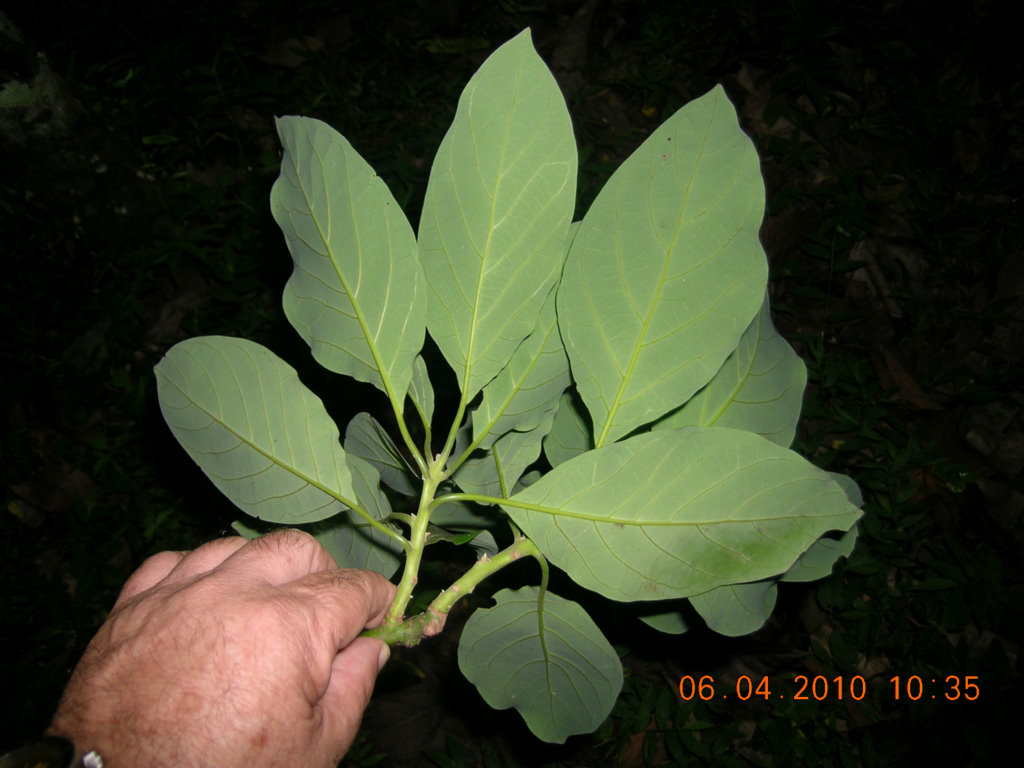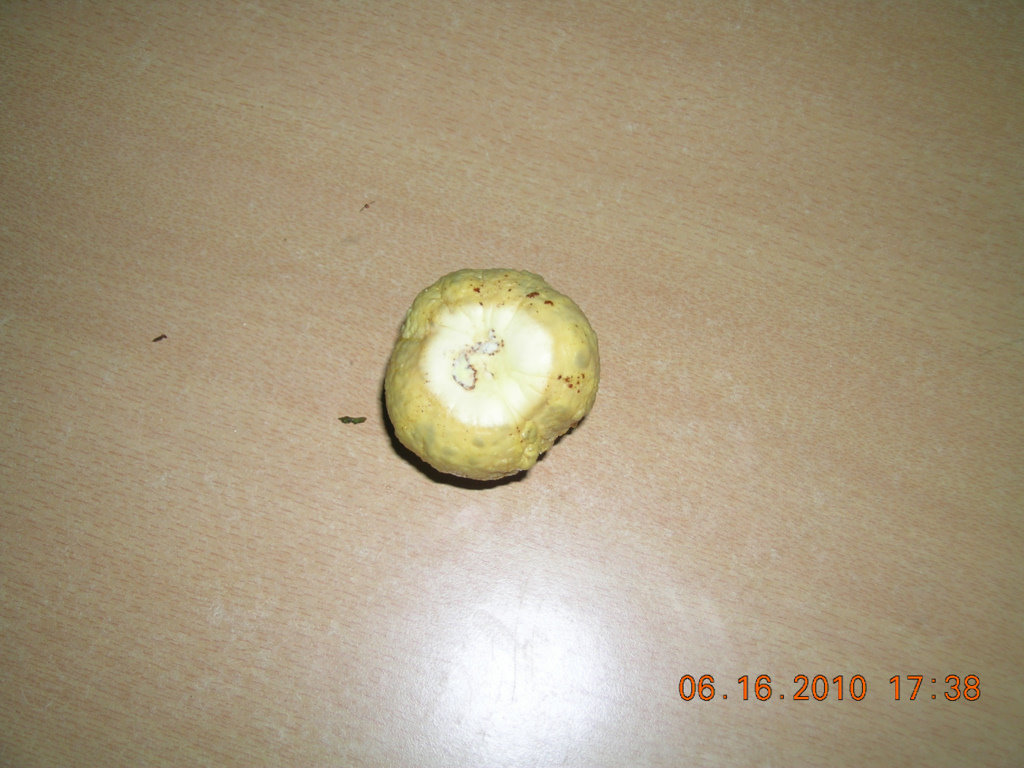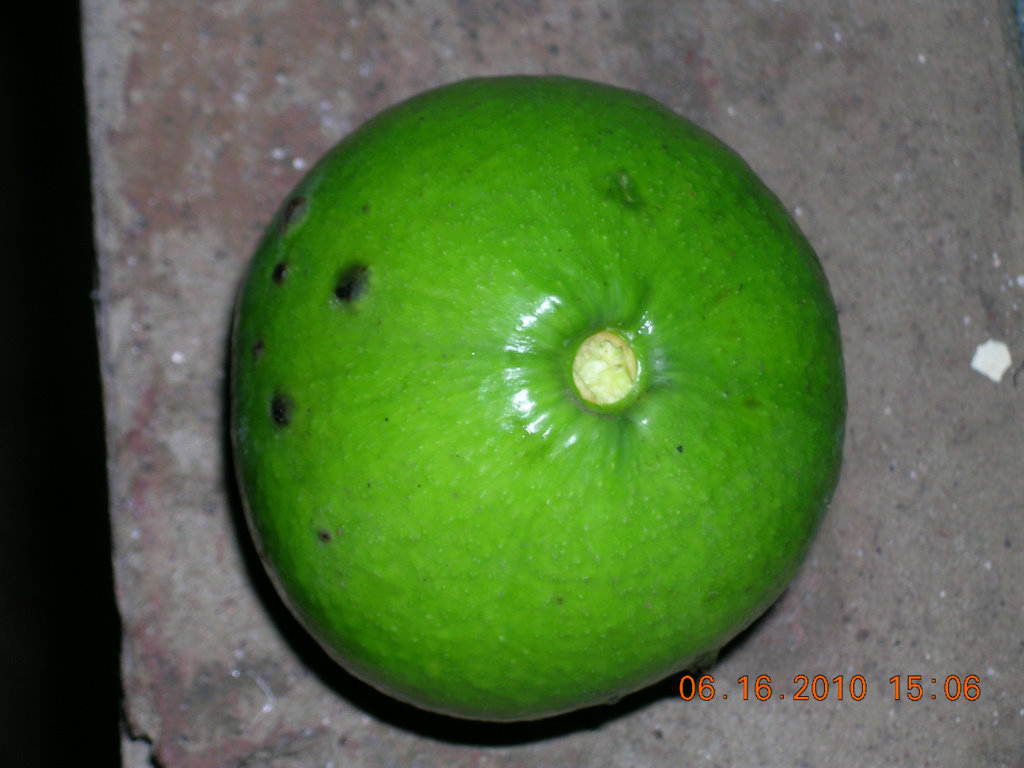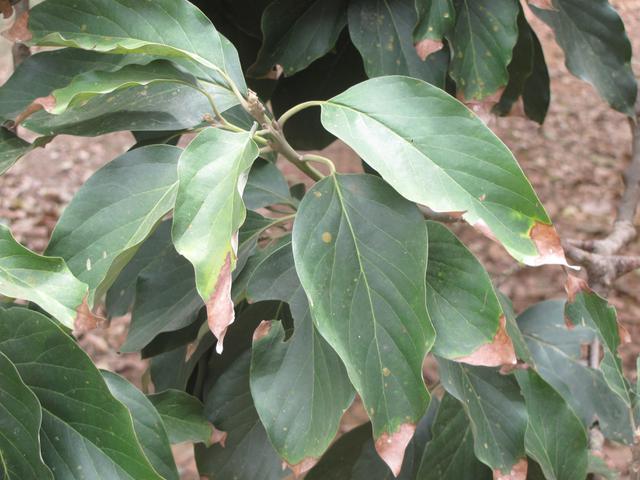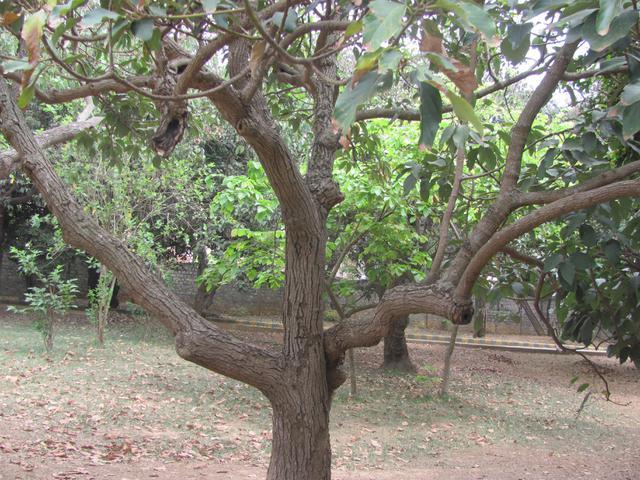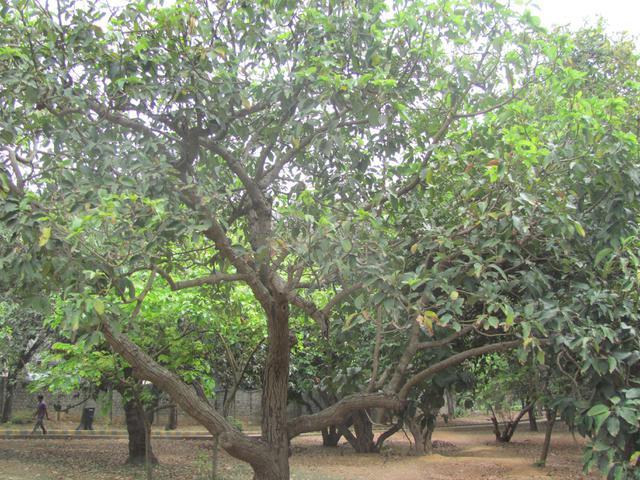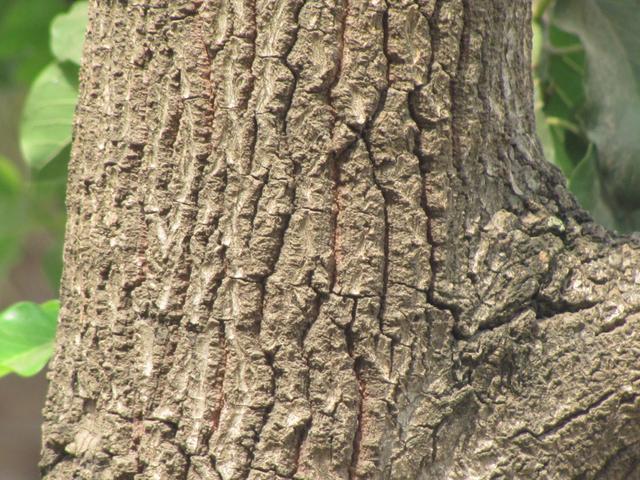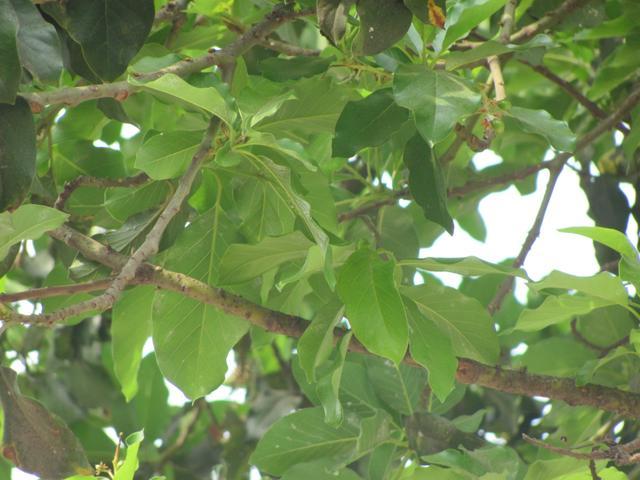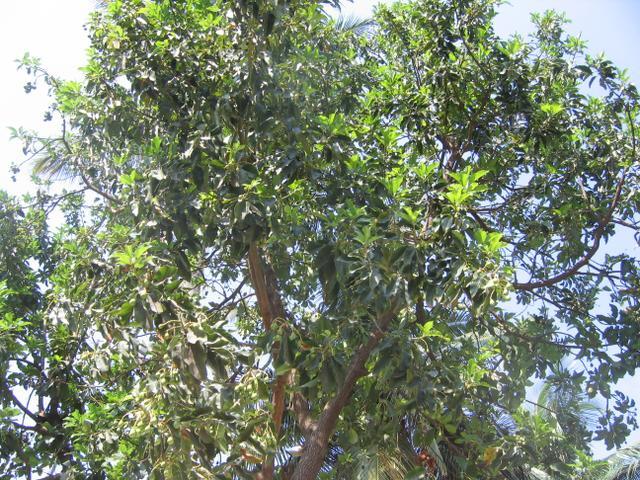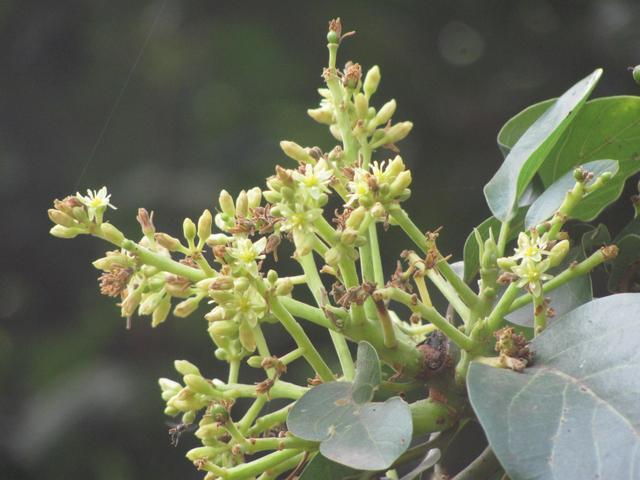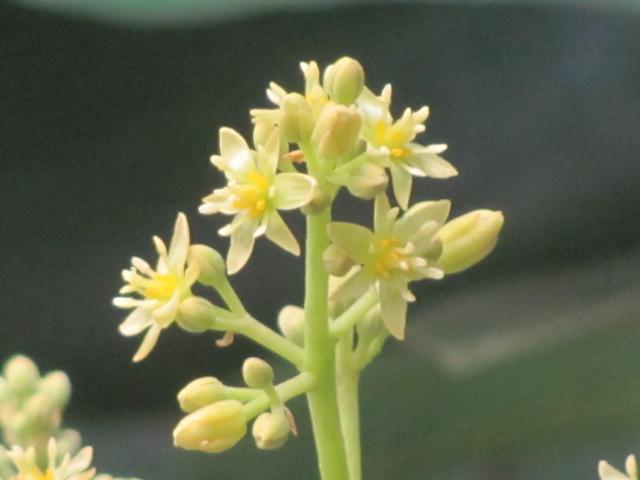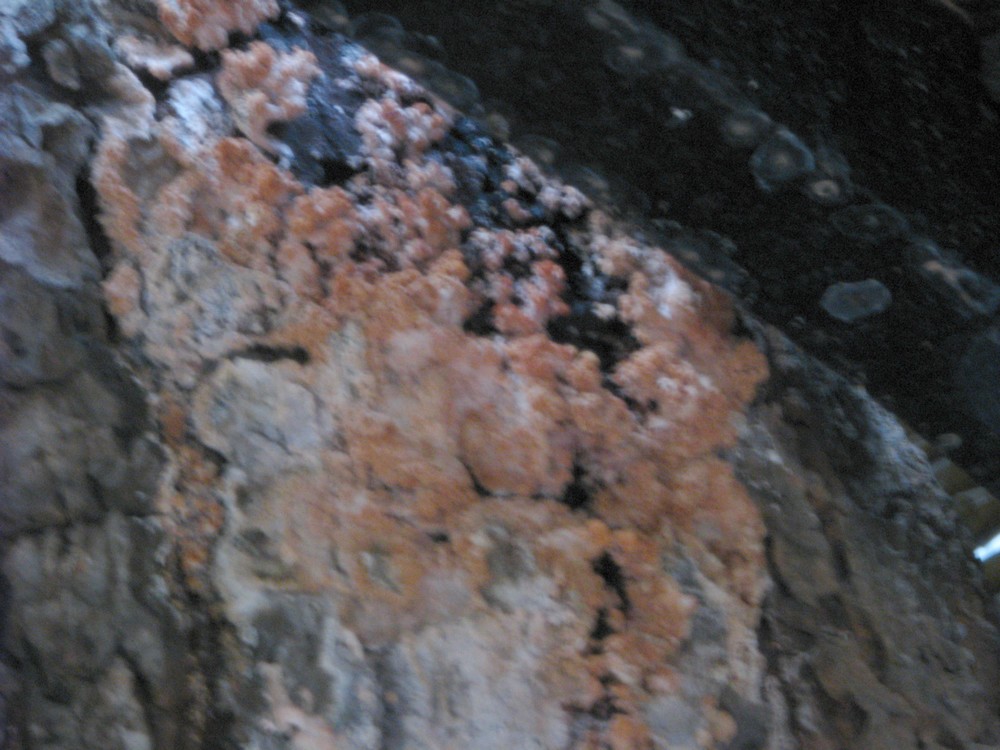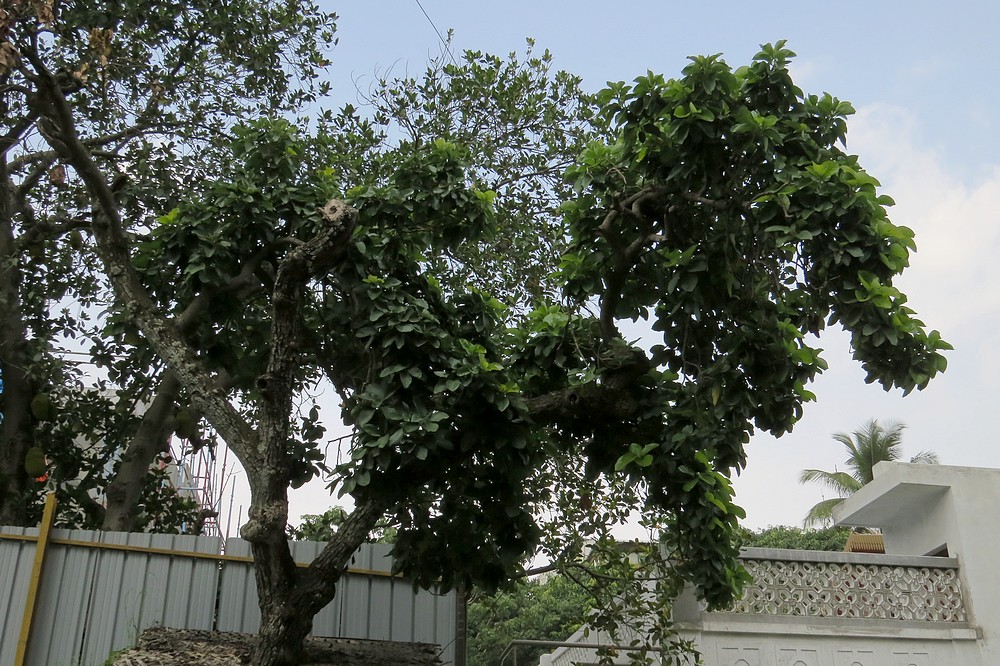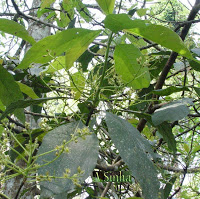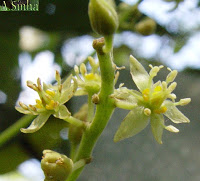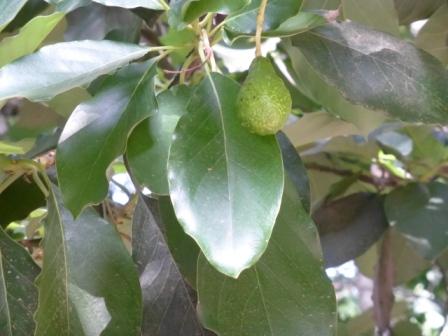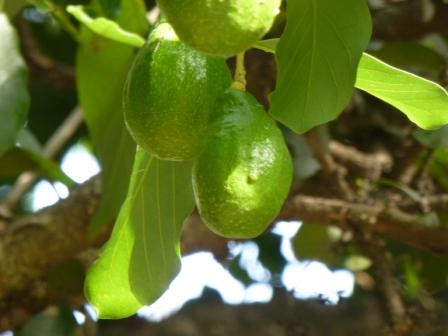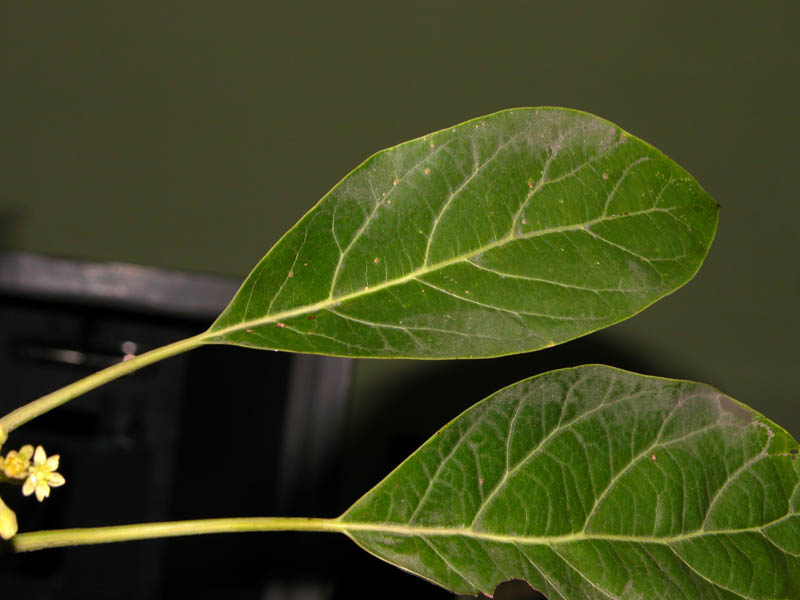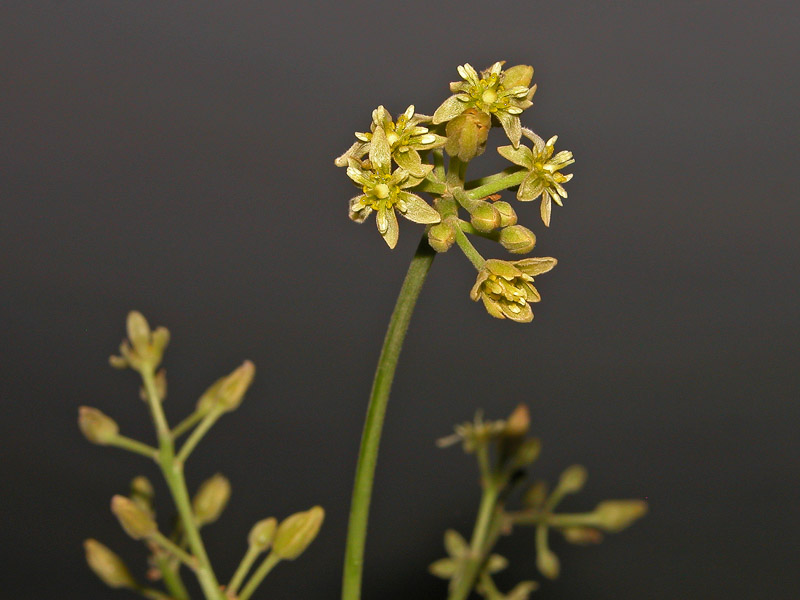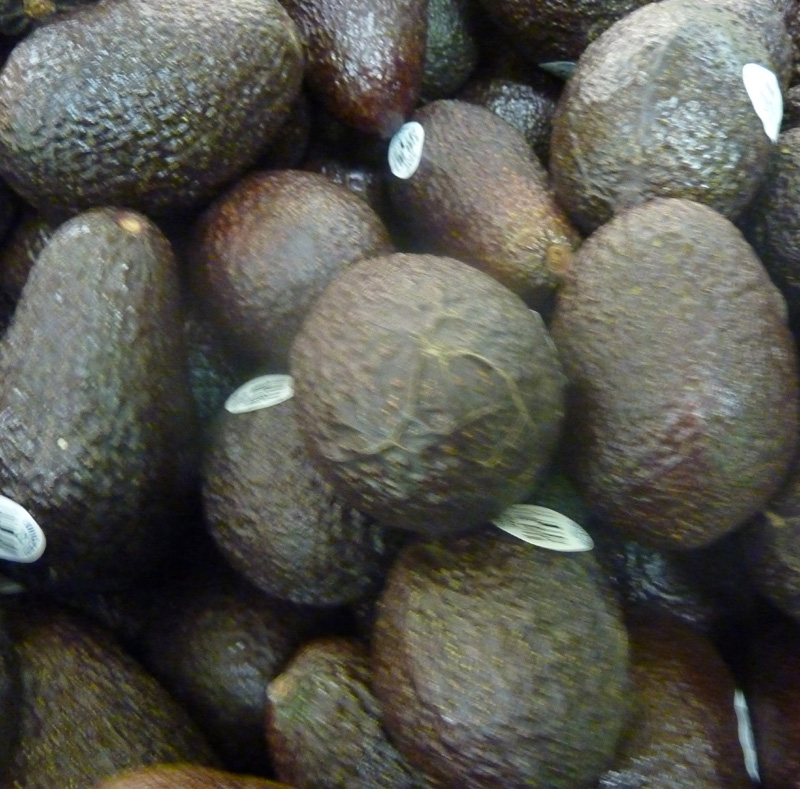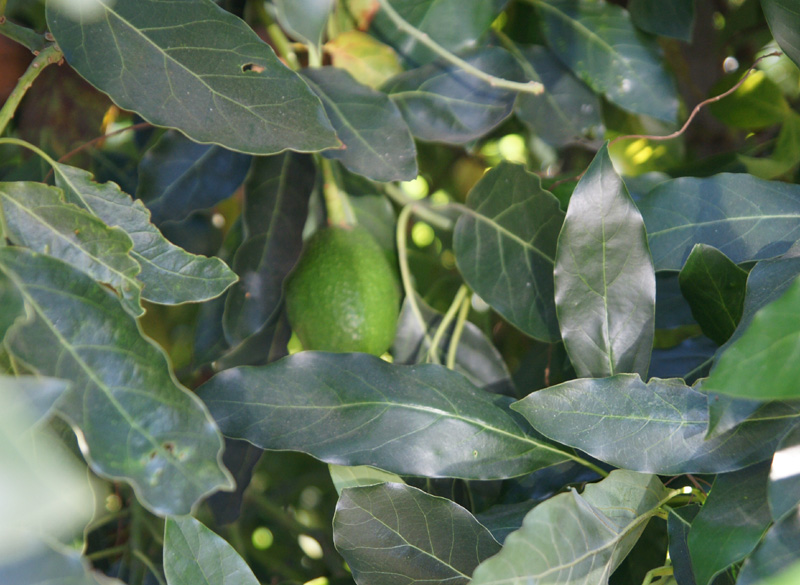Machilus clarkeana King. ex Hook. fil. (Central Himalaya to Myanmar: Assam, East Himalaya, Myanmar, Nepal as per POWO)
. From Floral Database of Tamilnadu :
. . Mansfeld’s Encyclopedia of Agricultural and Horticultural Crops: (Except … edited by Peter Hanelt, R. Büttner (2001)- Details- Persea bombycina (King ex Hook. f.) Kosterm. (syn. of Machilus gamblei King ex Hook. f.) Persea fructifera KOST. (synonym for Machilus edulis King ex Hook. fil.) . Species with description & pictures in Flowers of India as on 29.1.14:
. . Species with distribution in annotated checklist of Flowering plants of Nepal : Persea americana Mill. Persea blumei Kosterm. (synonym for Machilus pubescens Bl.) Persea bombycina (King ex Hook. f.) Kosterm. (syn. of Machilus gamblei King ex Hook. f.) Persea clarkeana (King ex Hook. f.) Kosterm.(= Machilus clarkeana King ex Hook. f.) Persea duthiei (King ex Hook. f.) Kosterm. (syn. of Machilus duthiei) Persea gamblei (King ex Hook. f.) Kosterm.(= Machilus gamblei King ex Hook. f.) Persea gammieana (King ex Hook. f.) Kosterm. ex Kosterm. & Chater(= Machilus clarkeana King ex Hook. f.) Persea odoratissima (Nees) Kosterm. (syn. of Machilus odoratissima Nees) Persea villosa (Roxb.) Kosterm. (syn. of Machilus glaucescens (Nees) H. W. Li) Persea wallichii D. G. Long (syn. of Machilus sericea (Wall. ex Nees) Bl.) . . Forest Plants of Eastern India By Amal Bhusan Chaudhuri (1993)- Brief details with Keys- Machilus bombycina King ex Hook. f. is a synonym of Machilus gamblei King ex Hook. f. Machilus edulis King ex Hook.f. Machilus gamblei King ex Hook. f. Machilus odoratissimus Nees Machilus villosa (Roxb.) Hook. f. is a synonym of Machilus glaucescens (Nees) H. W. Li . An Excursion Flora of Central Tamilnadu, India By K. M. Matthew (1995)- Details- . Forest Plants of Eastern India By Amal Bhusan Chaudhuri (1993)- Brief details with Keys- Machilus bombycina King ex Hook. f. is a synonym of Machilus gamblei King ex Hook. f. Machilus edulis King ex Hook.f. Machilus gamblei King ex Hook. f. Machilus odoratissimus Nees is a synonym of Persea odoratissima (Nees) Kosterm. Machilus villosa (Roxb.) Hook. f. is a synonym of Machilus glaucescens (Nees) Wight . Machilus & Persea : 1 post by 1 author. I have updated eFI (efloraofindia) page on Machilus & Persea Attempts have been made to incorporate most of the species available in India & nearby areas with details & keys directly or through links as far as possible. It’s quite possible that there may be some discrepancy in the accepted names & synonyms taken from other links. Species discussed so far in efloraofindia are given at the bottom of the page in the form of links against Subpages. On clicking them one can see all the details. Any comments/ corrections are welcome. . Machilus & Persea (Lauraceae) page with images of species in efloraofindia : 1 post by 1 author. Pl. go through Machilus & Persea (Lauraceae) page with images of species in efloraofindia.
|
Machilus
Updated on December 24, 2024


